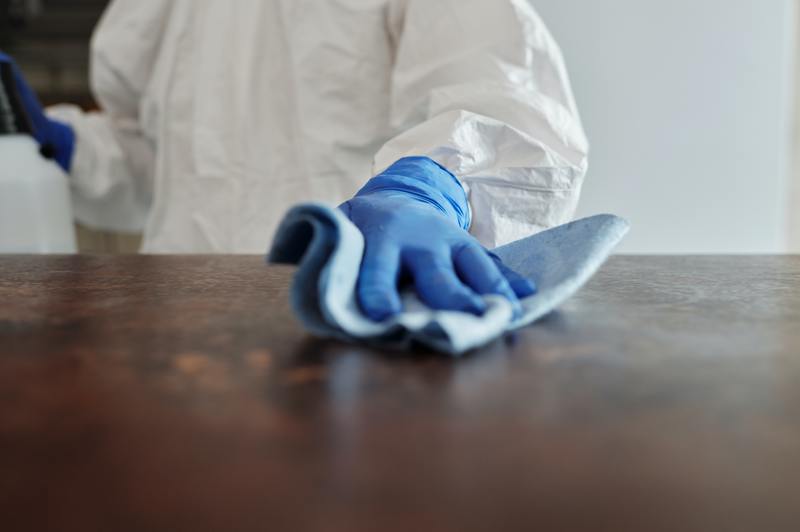When dealing with vermin, you may be asking, “how does pest control work?” You might be figuring out how to go about it or what steps you need to take.
Fret not because we’ll go over some of the usual concerns regarding pest control and how it works.

What Should You Know About Pest Control?
As the name implies, pest control services will be a great help in ridding your home of any vermin crawling about in your home.
There are various services and specializations your local pest control can offer. These may include mosquito control, bed bug control, cockroach control, or any other specific unwanted critters invading your home.
The time pest control takes varies depending on the severity of the situation or the type of service or specialization pest control will do.
Some procedures may take 15 to 30 minutes. Other cases may take up a good chunk of the day.
Infestations are another story. Depending on how badly the infestation is, it can take a few days or even a few weeks to rid these unwanted guests.
Sometimes, you may be able to do preventative measures or get rid of vermin independently. Pest control can be handy for when things are beyond your control.
In some cases, pests outdoors may also be a problem. If you have a mini greenhouse, you can try preventative measures with our handy guide on how to keep bugs out of mini-greenhouses.
How Do You Prepare For Pest Control?
Once you find yourself a reputable pest control company, you’ll want to get your home ready for the treatments they’ll do.
1. Remove or put away necessities
Before they arrive, it can help to move any furniture or appliances from the corners of your home. Moving your stuff can make it easier for the pest control team to access the hard-to-reach places to clear out any pests.
After this, you want to ensure your belongings don’t get contaminated.
Things such as clothes, toys, essentials, and even beddings should be kept in a safe area. If there’s nowhere to put them, wrap them in plastic so that pesticide doesn’t settle on them.
A reasonable precaution for things you keep in drawers is to tape the spaces between the doors and drawers. Avoid masking tape as paper can absorb pesticides.
You’ll also want to cover your furniture in plastic. Don’t use cloth wraps since they can absorb the chemicals used.
2. Clear out the kitchen
Regarding your kitchen and dining area, start by emptying your garbage can.
Keep all your utensils, plates, bowls, cups, and anything similar. You have to store these items because pest control usually sprays kitchen cabinets, which are potential breeding grounds for vermin.
It’s advisable to take small kitchen appliances out of the kitchen.
If this isn’t possible, unplug them and wrap them in plastic. Also, make sure the appliances are easy to move around if you leave them on the countertop.
Store all your food in thick plastic containers as pests chew through the thin plastic. If you have items like spices and chips, store them in your fridge if the need arises.
You may also want to unplug your fridge before pest control does its work. Consume any perishable goods and discard leftovers for good measure.
3. Relocate your pets
If you have any pets, let them stay somewhere else, like at the house of a neighbor, friend, or family member, during the process. Pets are pretty sensitive to the chemicals used during treatments.
Like with everything else, store your pets’ items safely away to prevent contamination.
If you have pet fish, wrap the aquariums tightly in plastic. Pest control would also be an excellent opportunity to invest in an auto-feeder, so your fish have enough food to last.
Turn off your aquarium’s air pumps. Running air pumps can absorb toxins that can contaminate the water.
4. Let your plants breathe fresh air
If you have any plants, leave them outside in the open. You can try wrapping them in plastic, but note that some may survive while others may wither.
5. Clear the bathroom
If you know your bathroom is getting sprayed, empty it. Put extra care into storing away your toothbrushes, razors, and other toiletries.
After pest control deals with the bathroom, it may be safe to replace any soap and detergent.
Is It Safe To Return Home After Pest Control?
After the procedures, you may have to wait around two to four hours before getting back inside. Sometimes, you might need to wait a whole day.
Besides waiting, here are some other precautions you should take afterward.
- If you left any food out during the process, throw it out. Even organic pesticides can still be toxic, and the food may not be safe.
- Wear protective gear such as gloves when touching treated surfaces. Gloves are a must when unwrapping your wrapped belongings.
- Try to avoid cleaning. You might accidentally wipe away any chemicals used to deter pests.
- Repair leaks as leaky areas and cracks could attract pests again.
- Be on the lookout for pests even after the treatment. Dead pests might turn up now and then, and these dead vermin can attract more pests too.
- You’ll have to get rid of any paper products since they can draw in more vermin.
- If you’ve had a problem with bed bugs, there may be stains that you may not have been able to clean. Once you can clean, here’s a helpful guide on how to get rid of bed bug stains.
Conclusion
It sure was a lot to figure out how to go about pest control. Nevertheless, it’s good that you won’t have to ask “how does pest control work” anymore.
Knowing these tips can help when you have to deal with taking care of unwanted vermin.
